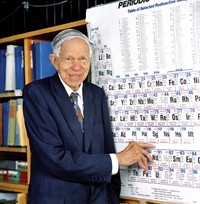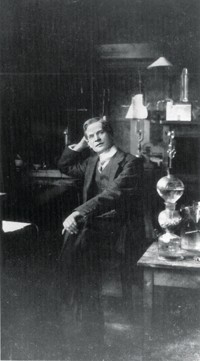Advertisement
Grab your lab coat. Let's get started
Welcome!
Welcome!
Create an account below to get 6 C&EN articles per month, receive newsletters and more - all free.
It seems this is your first time logging in online. Please enter the following information to continue.
As an ACS member you automatically get access to this site. All we need is few more details to create your reading experience.
Not you? Sign in with a different account.
Not you? Sign in with a different account.
ERROR 1
ERROR 1
ERROR 2
ERROR 2
ERROR 2
ERROR 2
ERROR 2
Password and Confirm password must match.
If you have an ACS member number, please enter it here so we can link this account to your membership. (optional)
ERROR 2
ACS values your privacy. By submitting your information, you are gaining access to C&EN and subscribing to our weekly newsletter. We use the information you provide to make your reading experience better, and we will never sell your data to third party members.
People
Giants of chemistry
by Bibiana Campos Seijo
November 13, 2017
| A version of this story appeared in
Volume 95, Issue 45
Last week we celebrated the birthdays of two giants in the history of science: Marie Curie and Lise Meitner.
Marie Curie was born on Nov. 7, 1867, which makes this year the 150th anniversary of her birth. Of course it is an opportunity to revisit her life and achievements, which you can read about in C&EN. She was a remarkable individual, and her life is a tale of resilience, determination, and plain doggedness in the pursuit of science.
She had no formal training in math or science, yet she went on to become the first woman to win a Nobel Prize and the first person and only woman to win twice. She was also the only person to win a Nobel Prize in two different sciences. What’s more, her family legacy will forever be remembered: She, her husband Pierre, and her daughter Irène collected a total of four Nobel Prizes.
Lise Meitner was also born on Nov. 7 but 11 years after Marie. She was an Austrian physicist who will go down in history for being the first woman to become a full professor of physics in Germany. With her collaborator, Otto Hahn, she led the small group of scientists who first discovered the nuclear fission of uranium when it absorbed an extra neutron.
While Marie received Nobel recognition, Meitner is remembered for exactly the opposite: She did not share in the 1944 Nobel Prize in Chemistry for nuclear fission, which was awarded exclusively to Hahn. This was despite receiving 48 nominations by some of the greatest minds in science, including Niels Bohr and Max Planck. For comparison, Bohr received 22 nominations, and Planck received 74. Both became Nobelists.
The controversy aside, these two women have a tremendous legacy. They’ll always be remembered in the periodic table because both have elements named after them: the element with atomic number 96, curium, and the element with atomic number 109, meitnerium.
The curie, a unit of radioactivity, is also named in honor of the Curie family—although the commission that agreed on the name apparently never specified whether it was named after Pierre, Marie, or both of them.
This anniversary made me think of the giants of chemistry we have lost in recent times. Only in the past month or so, we announced that Ron Breslow had died at age 86 and that Gilbert Stork passed away at 95. They were preceded in early October by Isabella Karle, who many would argue also deserved a Nobel. She died at age 95. These are just a few of those we said goodbye to in the past few months.
Related to this news, I read with interest Jeffrey Seeman’s commentary for the Bulletin for the History of Chemistry in which he reflects on the recent deaths—and lives—of so many giants of what he calls the Golden Age of Chemistry. In his piece he asks the question: “Is there something fundamentally special about THIS generation of chemists that distinguishes them from the greatest chemists of earlier generations?”
Seeman says there is, but I’d argue that there isn’t something inherently special about that generation, or any generation for that matter—just a different set of circumstances. These giants lived through a period in which chemical knowledge exploded, transforming the academic and commercial enterprises. In that sense, they were pioneers and trailblazers and have gone, as Curie and Meitner will go, down in the annals of chemical history.
But the fact that their generation is not inherently special doesn’t diminish their achievements in any way. They are still giants and always will be.
Views expressed on this page are those of the author and not necessarily those of ACS.
CORRECTION: This article was updated on Nov. 13, 2017, to correct the age at which Ron Breslow died. He was 86, not 96.




Join the conversation
Contact the reporter
Submit a Letter to the Editor for publication
Engage with us on Twitter